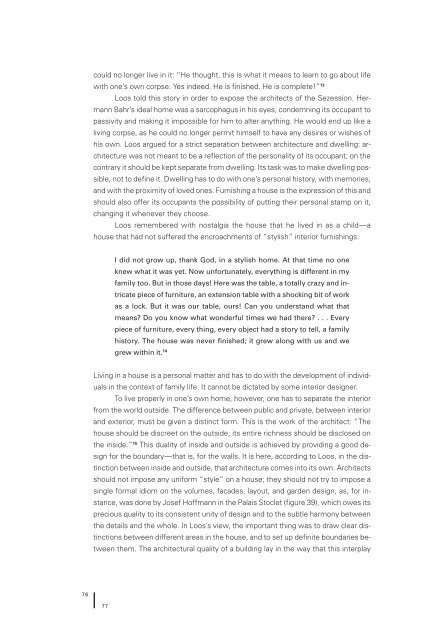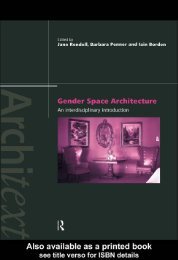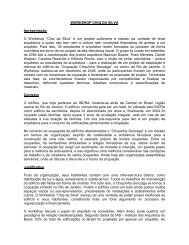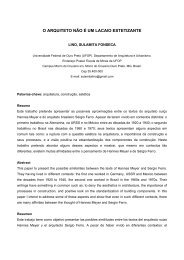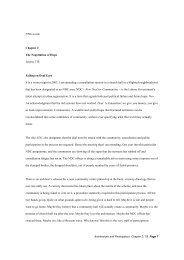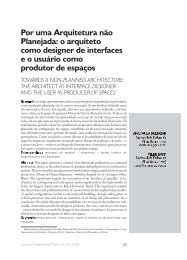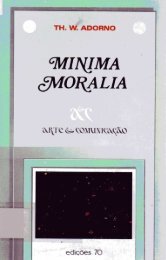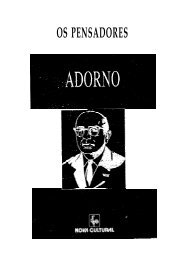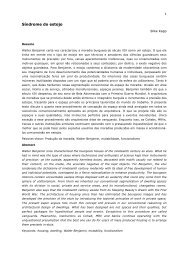Architecture and Modernity : A Critique
Architecture and Modernity : A Critique
Architecture and Modernity : A Critique
Create successful ePaper yourself
Turn your PDF publications into a flip-book with our unique Google optimized e-Paper software.
76<br />
could no longer live in it: “He thought, this is what it means to learn to go about life<br />
with one’s own corpse. Yes indeed. He is finished. He is complete!” 13<br />
Loos told this story in order to expose the architects of the Sezession. Hermann<br />
Bahr’s ideal home was a sarcophagus in his eyes, condemning its occupant to<br />
passivity <strong>and</strong> making it impossible for him to alter anything. He would end up like a<br />
living corpse, as he could no longer permit himself to have any desires or wishes of<br />
his own. Loos argued for a strict separation between architecture <strong>and</strong> dwelling: architecture<br />
was not meant to be a reflection of the personality of its occupant; on the<br />
contrary it should be kept separate from dwelling. Its task was to make dwelling possible,<br />
not to define it. Dwelling has to do with one’s personal history, with memories,<br />
<strong>and</strong> with the proximity of loved ones. Furnishing a house is the expression of this <strong>and</strong><br />
should also offer its occupants the possibility of putting their personal stamp on it,<br />
changing it whenever they choose.<br />
Loos remembered with nostalgia the house that he lived in as a child—a<br />
house that had not suffered the encroachments of “stylish” interior furnishings:<br />
77<br />
I did not grow up, thank God, in a stylish home. At that time no one<br />
knew what it was yet. Now unfortunately, everything is different in my<br />
family too. But in those days! Here was the table, a totally crazy <strong>and</strong> intricate<br />
piece of furniture, an extension table with a shocking bit of work<br />
as a lock. But it was our table, ours! Can you underst<strong>and</strong> what that<br />
means? Do you know what wonderful times we had there? . . . Every<br />
piece of furniture, every thing, every object had a story to tell, a family<br />
history. The house was never finished; it grew along with us <strong>and</strong> we<br />
grew within it. 14<br />
Living in a house is a personal matter <strong>and</strong> has to do with the development of individuals<br />
in the context of family life. It cannot be dictated by some interior designer.<br />
To live properly in one’s own home, however, one has to separate the interior<br />
from the world outside. The difference between public <strong>and</strong> private, between interior<br />
<strong>and</strong> exterior, must be given a distinct form. This is the work of the architect: “The<br />
house should be discreet on the outside; its entire richness should be disclosed on<br />
the inside.” 15 This duality of inside <strong>and</strong> outside is achieved by providing a good design<br />
for the boundary—that is, for the walls. It is here, according to Loos, in the distinction<br />
between inside <strong>and</strong> outside, that architecture comes into its own. Architects<br />
should not impose any uniform “style” on a house; they should not try to impose a<br />
single formal idiom on the volumes, facades, layout, <strong>and</strong> garden design, as, for instance,<br />
was done by Josef Hoffmann in the Palais Stoclet (figure 39), which owes its<br />
precious quality to its consistent unity of design <strong>and</strong> to the subtle harmony between<br />
the details <strong>and</strong> the whole. In Loos’s view, the important thing was to draw clear distinctions<br />
between different areas in the house, <strong>and</strong> to set up definite boundaries between<br />
them. The architectural quality of a building lay in the way that this interplay


